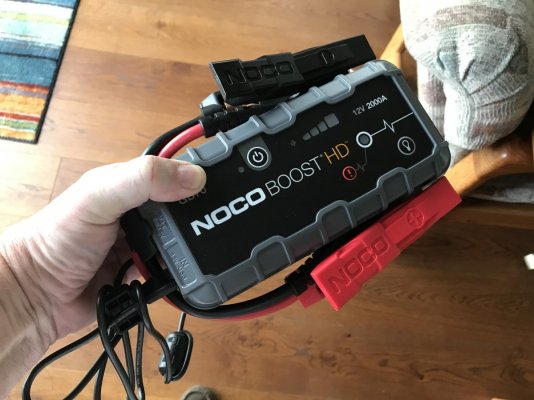Marco Flamingo
Guru
- Joined
- Jan 7, 2020
- Messages
- 1,108
- Location
- United States
- Vessel Name
- CHiTON
- Vessel Make
- Tung Hwa Clipper 30
I have a general question about battery banks. I have 4 6V Dyno 260Ah batteries, two in each bank to get 12V. The PO said that's plenty to start my 80hp Lehman without the need for a separate starting battery. I have left both banks on overnight and used them as house batteries, but I am concerned that if anything went wrong I could drain both banks and not get the engine started. But then I thought about what actually happens when I use only one bank and connect them in the morning before starting the engine.
Say I've drained the overnight bank of batteries to 50% SOC. Should I connect the banks with the battery switch and then start the engine? What happens when you connect a drained bank to a full bank? Any issues on the "rush" of juice from one to another? Does that count as a "cycle" with the full bank discharging into the 50% SOC bank. Would the full bank be discharged to 25% over time if the engine isn't started? Any issues with the alternator bulk charging to batteries at different SOCs? Am I overthinking this?
Say I've drained the overnight bank of batteries to 50% SOC. Should I connect the banks with the battery switch and then start the engine? What happens when you connect a drained bank to a full bank? Any issues on the "rush" of juice from one to another? Does that count as a "cycle" with the full bank discharging into the 50% SOC bank. Would the full bank be discharged to 25% over time if the engine isn't started? Any issues with the alternator bulk charging to batteries at different SOCs? Am I overthinking this?

